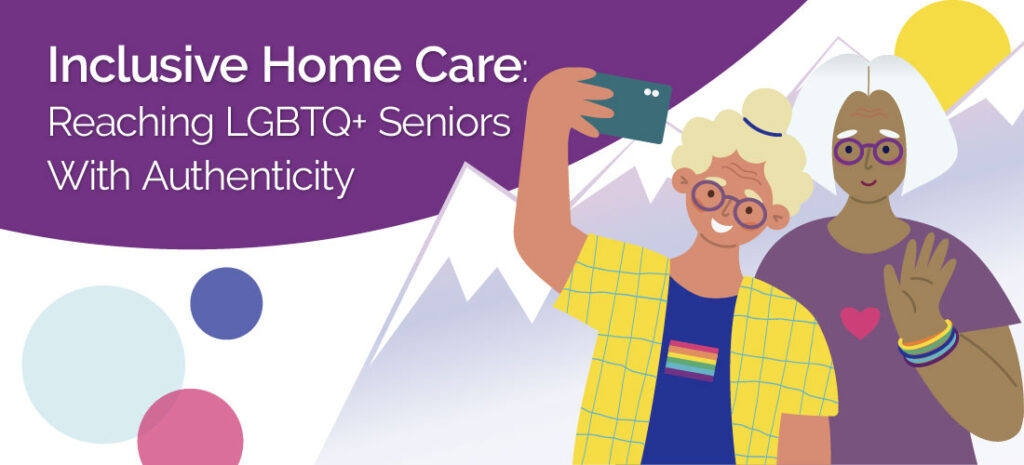
Let’s face it—aging looks a little different than it used to. The cookie-cutter image of the “senior citizen” who quietly knits in a rocking chair is totally outdated. Today’s older adults are out running 5Ks, dancing at outdoor concerts, and navigating complex family dynamics that may include blended families, chosen families, or no family at all. And your marketing needs to reflect that.
Home care agencies that still rely on one-note messaging—stock images of silver-haired couples holding hands and buzzwords like “golden years”—are missing a big opportunity to connect with a broader, more diverse audience. That includes LGBTQ+ older adults, those aging solo without adult children, and individuals with different cultural expectations and lived experiences.
If your home care marketing isn’t reflecting the real lives of the people you serve, it’s time for a reset.
Today’s Clients Aren’t All the Same—and That’s the Point
It’s tempting to imagine your typical client as the adult daughter calling for help with her aging parent. And yes, she’s a key audience—but she’s not the only one. Many older adults are making care decisions for themselves. Others are relying on friends or community members, not children, to help navigate options.
Consider this stat from SAGE, the national advocacy group for LGBTQ+ elders: LGBTQ+ older adults are twice as likely to live alone and four times less likely to have children than their heterosexual peers. That changes everything—from who’s calling your agency to how you build trust.
Fear of Judgment Is Real
Some LGBTQ+ older adults have experienced discrimination in healthcare or housing. So when it comes to inviting someone into their home to provide care, there may be hesitation—or even fear.
If your marketing implies assumptions about gender, relationship status, or family dynamics, it can be alienating. But when your language is inclusive, your visuals show real diversity, and your messaging reflects empathy and understanding, you can start building trust from the first glance.
Words Matter So Much More Than You Think
What does your website actually say? Are you calling everyone “Mom and Dad”? Are you only addressing family caregivers, and not the care recipients themselves? Even small shifts—like saying “older adult” instead of “elderly,” or using gender-neutral language—can make your agency feel more welcoming.
Inclusive marketing isn’t about being politically correct. It’s about being real. It’s about recognizing that aging isn’t one-size-fits-all, and neither is care.
Images Tell the Story Before Your Words Do
Want to know if your marketing reflects today’s aging adults? Scroll through your homepage. Do all the people look the same? Do they all fit the same narrative? If so, it might be time to add some new faces—ones that look like your real clients.
Visual representation helps people see themselves in your story. And when they can see themselves, they’re more likely to trust that you understand their needs.
So What Can You Do Today?
Start by reviewing your existing materials. Are you reinforcing stereotypes without meaning to? Are you missing whole audiences who could benefit from your care?
Then, consider these next steps:
- Partner with local LGBTQ+ or cultural organizations to learn how you can be a better ally in your messaging and services.
- Train your team on inclusive language and culturally competent care.
- Showcase real client stories (with permission) that reflect the diversity of your community.
- Avoid making assumptions about who’s seeking care—and how they define “family.”
Looking for a Marketing Partner That Gets It?
At corecubed, we’ve been helping home care agencies find their voice—and expand their reach—for decades. If you’re ready to make your marketing reflect the reality of aging today, we’re here to help you do it with heart, strategy, and style.
Call us at 800.370.6580 to get started on a home care marketing strategy that truly connects.
